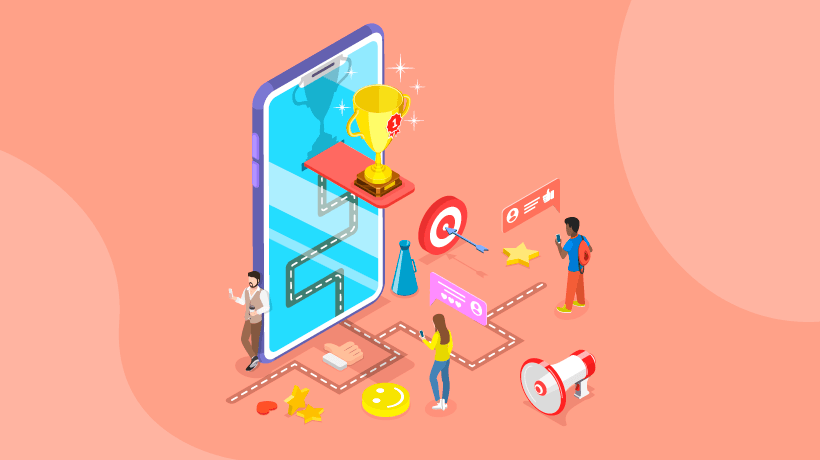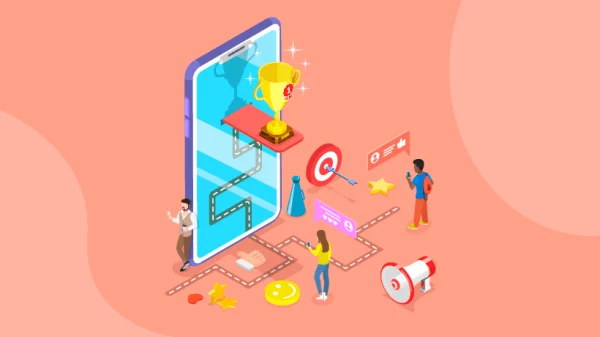Gamification, the use of game design elements in non-game contexts, has gained popularity as a powerful strategy for businesses to engage customers, boost loyalty, and expand their customer base. By incorporating elements such as challenges, rewards, and competitions, gamification can create a fun and interactive experience that encourages customers to actively participate and stay connected with a brand. In this article, we will explore five gamification strategies that can increase customer loyalty and customer base for businesses. Interestingly, we shall share some case studies.
Read more about Business
Loyalty Programs
Implementing a well-designed loyalty program can be an effective gamification strategy to foster customer loyalty. Loyalty programs typically offer rewards, discounts, or exclusive perks to customers who frequently make purchases or engage with a brand. These rewards can be in the form of points, levels, or tiers, which customers can earn and redeem for future purchases. By providing incentives for repeat purchases and engagement, loyalty programs can create a sense of achievement and progression for customers, encouraging them to continue patronizing the brand to unlock more rewards and benefits.
A successful example of a loyalty program that increased customer loyalty and customer base is Starbucks’ Starbucks Rewards program. With a tiered system that offers free drinks, birthday rewards, and personalized offers, Starbucks Rewards has motivated customers to make repeat purchases and engage with the brand through its mobile app, resulting in increased customer loyalty and higher customer retention rates.
Social Media Campaigns
Social media platforms provide a fertile ground for gamification strategies to engage customers and expand the customer base. Businesses can create social media campaigns that encourage customers to participate in contests, share content, or engage in user-generated content. For example, a business could run a photo contest where customers can submit photos of themselves using the product or service, and the winners could receive prizes or discounts. This type of gamified social media campaign can generate buzz, encourage sharing, and attract new customers to the brand.
One successful example of a social media campaign that increased customer loyalty and customer base is Coca-Cola’s “Share a Coke” campaign. The campaign encouraged customers to find Coke bottles with their names or the names of their friends on them, take photos, and share them on social media with the hashtag #ShareACoke. This campaign created a sense of personalization, encouraged sharing, and generated buzz, resulting in increased brand engagement, customer loyalty, and customer base.
Referral Programs
Referral programs are another effective gamification strategy to increase customer loyalty and expand the customer base. Referral programs incentivize customers to refer their friends, family, or contacts to the brand, often by offering rewards or discounts for successful referrals. This encourages customers to become brand advocates and actively promote the brand to their network, resulting in increased customer acquisition and loyalty.
For example, Dropbox’s referral program offers free storage space to customers who refer their friends to sign up for the service. This gamified referral program has been highly successful in growing Dropbox’s customer base, as customers are motivated to refer more people to earn more free storage space.
Sign up for the Connect Nigeria daily newsletter
Exclusive Content and Access
Providing customers with exclusive content, access, or privileges can be an effective gamification strategy to foster customer loyalty and create a sense of exclusivity. Businesses can offer premium or VIP memberships, early access to new products or features, or special events or experiences to customers who meet certain criteria or achieve specific milestones.
A successful example of using exclusive content and access to increase customer loyalty is Amazon Prime. Amazon Prime offers premium membership benefits, such as free and fast shipping, access to exclusive deals, and access to Prime Video and Music. This gamified loyalty program has created a sense of exclusivity and loyalty among its members, who are motivated to continue their subscriptions to enjoy the benefits.
Personalized Recommendations and Customization
Personalization and customization are powerful gamification strategies that can increase customer loyalty and customer base. By offering personalized recommendations and allowing customers to customize their experience, businesses can create a sense of ownership and engagement, which can lead to increased loyalty and customer retention.
For example, e-commerce giant Amazon uses personalized recommendations to create a personalized shopping experience for each customer. Amazon analyzes customer browsing and purchasing behaviour to offer tailored product recommendations, which are displayed prominently on the homepage and throughout the shopping journey. This gamified approach creates a sense of personalization, encourages customers to discover new products, and increases the likelihood of repeat purchases.
Progress Tracking and Achievements
Progress tracking and achievements are fundamental elements of gamification that can be used to motivate customers and foster loyalty. Businesses can implement progress-tracking features that allow customers to see their progress towards a goal or achievement, and provide rewards or recognition when they reach milestones or complete tasks.
For example, fitness apps like Fitbit and MyFitnessPal use progress tracking and achievements to motivate users to achieve their fitness goals. Users can set goals for steps, calories burned, or distance walked, and the apps track their progress towards those goals. When users reach their goals, they receive badges, trophies, or other virtual rewards, which creates a sense of accomplishment and encourages them to continue using the app and stay committed to their fitness journey.
Register to attend the CN Business Mixer
Conclusion
Gamification strategies can be powerful tools for businesses to increase customer loyalty and expand their customer base. By incorporating game design elements such as rewards, challenges, competitions, and progress tracking, businesses can create a fun and engaging experience for customers, encouraging them to actively participate, stay connected, and remain loyal to the brand. From loyalty programs and social media campaigns to referral programs, exclusive content and access, personalized recommendations, and progress tracking, there are various gamification strategies that businesses can implement to drive business growth and foster customer loyalty in today’s competitive market.
Featured Image Source:
Got a suggestion? Contact us: [email protected]


